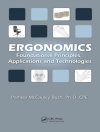Corrosion is a major cause of structural degradation in buildings and infrastructure, leading to significant impacts to the economy and public safety. Concern is growing about the deterioration and corrosion of critical infrastructure, such as towers, bridges, highways and tall buildings. Monitoring and addressing the condition of such assets requires an understanding of corrosion and the factors that may influence it. However, this is a complex issue spanning multiple disciplines, including engineering, materials science, architecture and construction.
Starting with the underlying chemical processes and common corrosion challenges, this book explores the nature of corrosion in a range of structures and their environmental, material and maintenance aspects. Effective inspection methods are explored, with practical strategies for mitigation and remediation. New opportunities with machine learning and artificial intelligence are also discussed, offering innovative solutions and making this an essential reference for anyone working on or studying the preservation of architectural structures and critical infrastructure.
Innehållsförteckning
- Understanding the Chemistry and Common Corrosion Issues of Infrastructure Corrosion
- Environmental Factors Influencing Infrastructure Corrosion
- Electrochemical Corrosion Monitoring
- Visual, Surface and Non-destructive Techniques
- Computational Approaches
- Corrosion of Steel and Iron
- Corrosion in Concrete and Masonry
- Corrosion in Residential Buildings and Architectural Structures
- Corrosion in Communication Towers
- Sustainable Approaches to Corrosion Management in Transportation Networks
- Corrosion in Transportation Infrastructure
- Use of Corrosion Inhibitor in Concrete Corrosion
- Use of Protective Coatings and Surface Treatments for Long Term Protection
- Proper Building Design Techniques for Corrosion Resistance
- Use of Cathodic Protection Systems
- Smart Corrosion Inhibition Techniques for Civil and Marine Infrastructures
- Use of Computer-based Methods in Measuring Aging in Infrastructures












